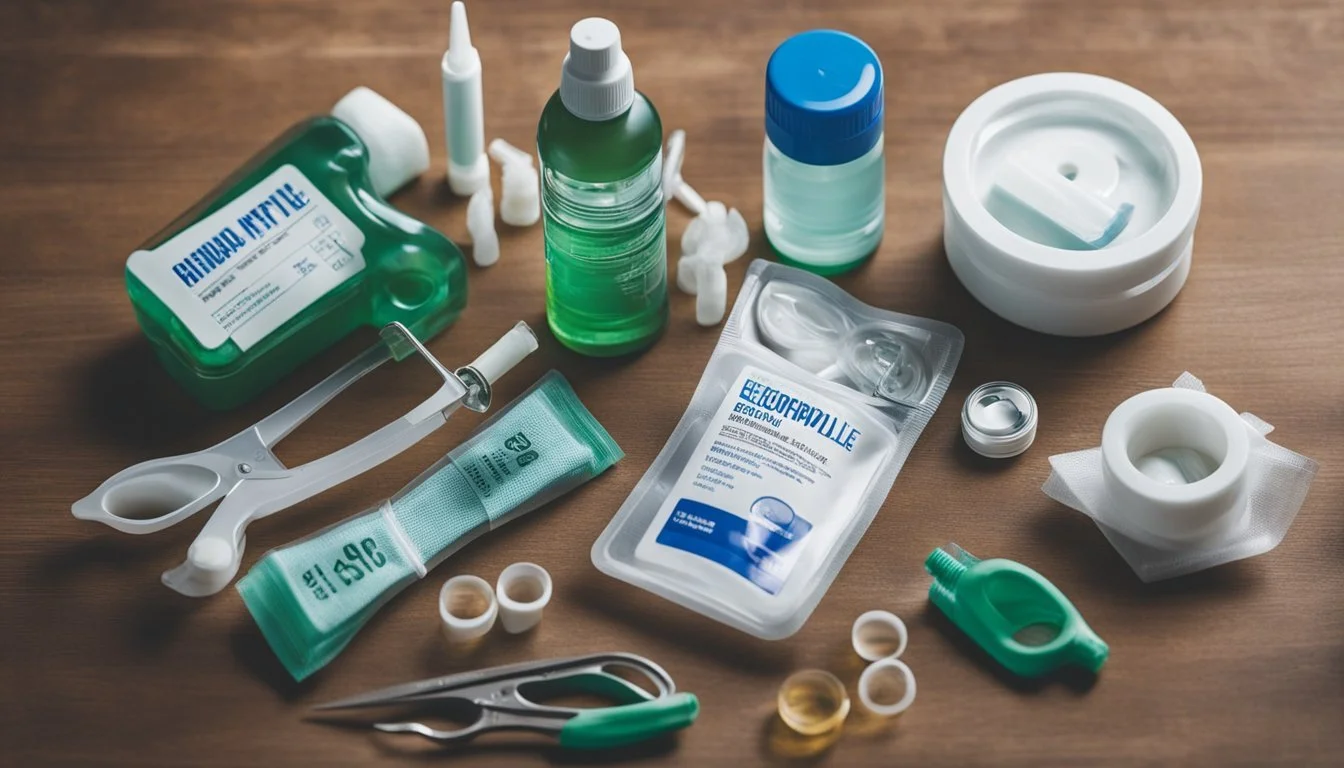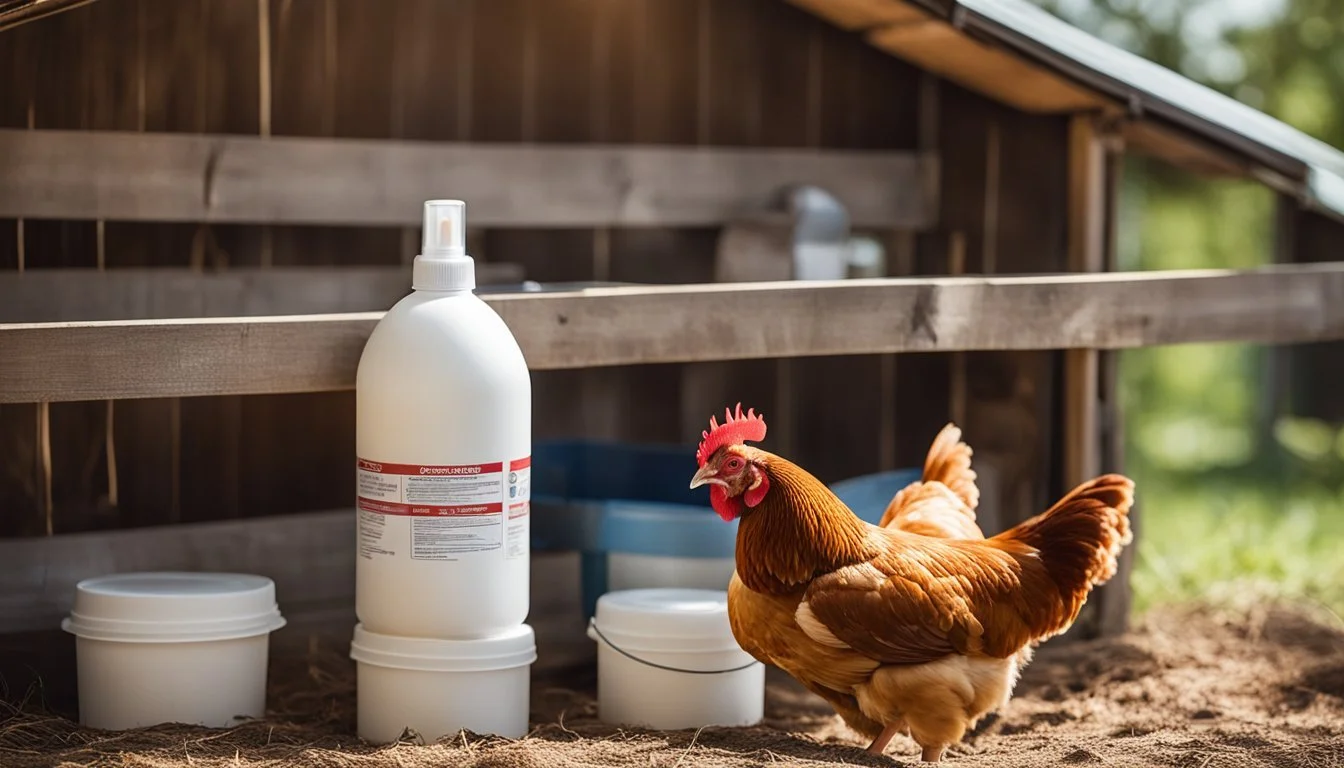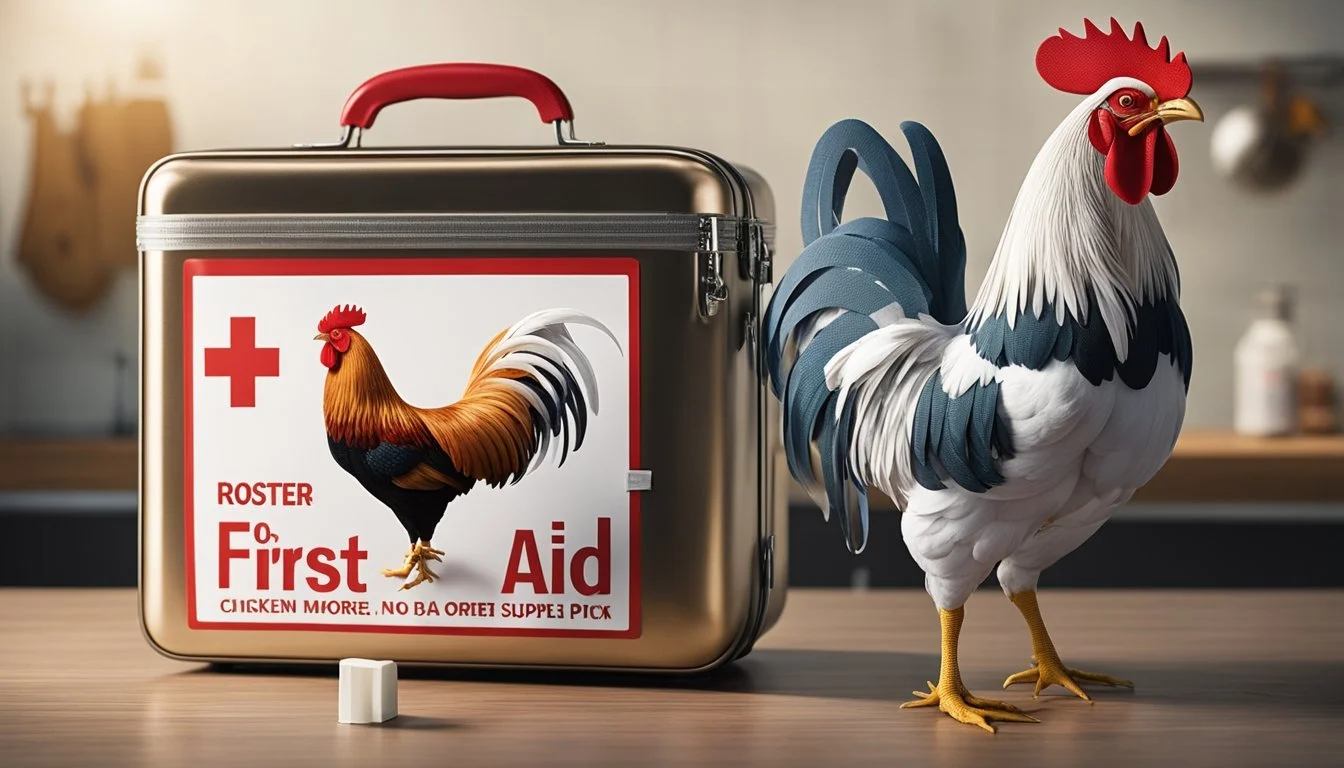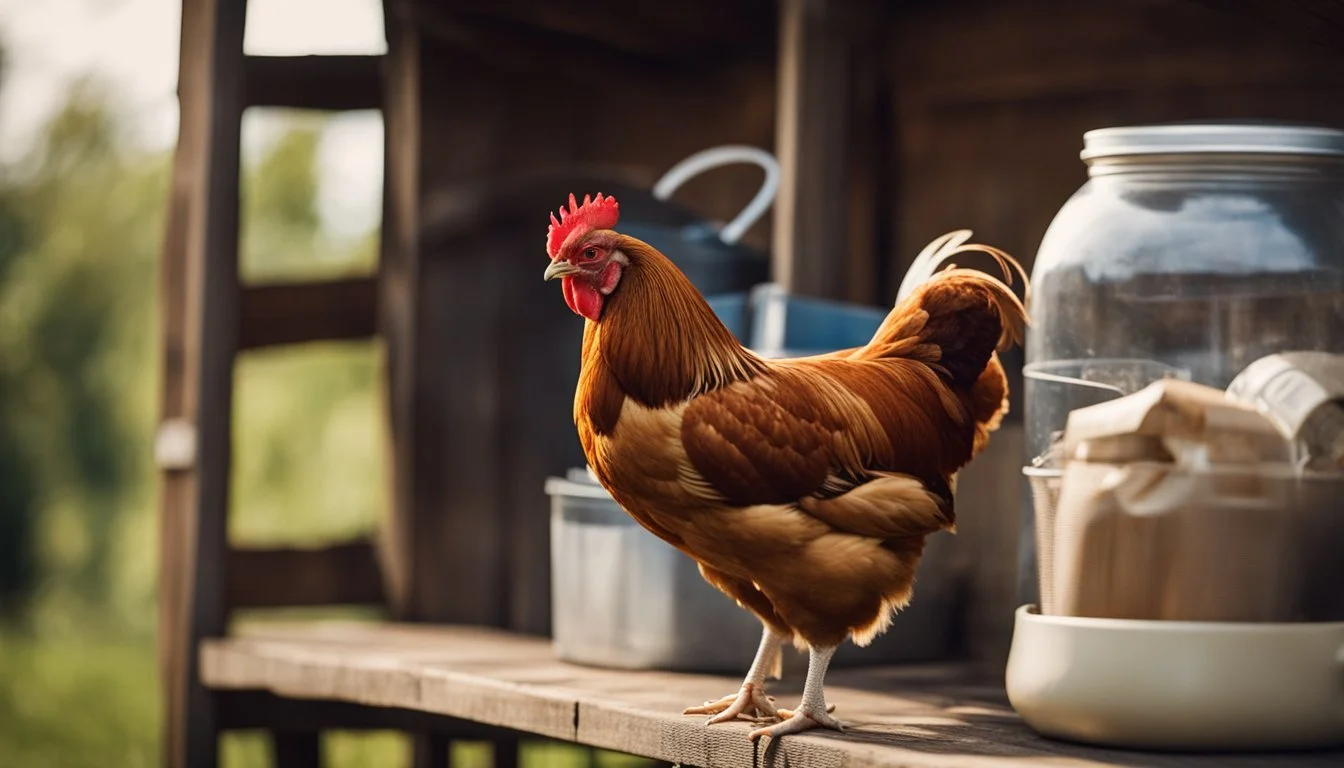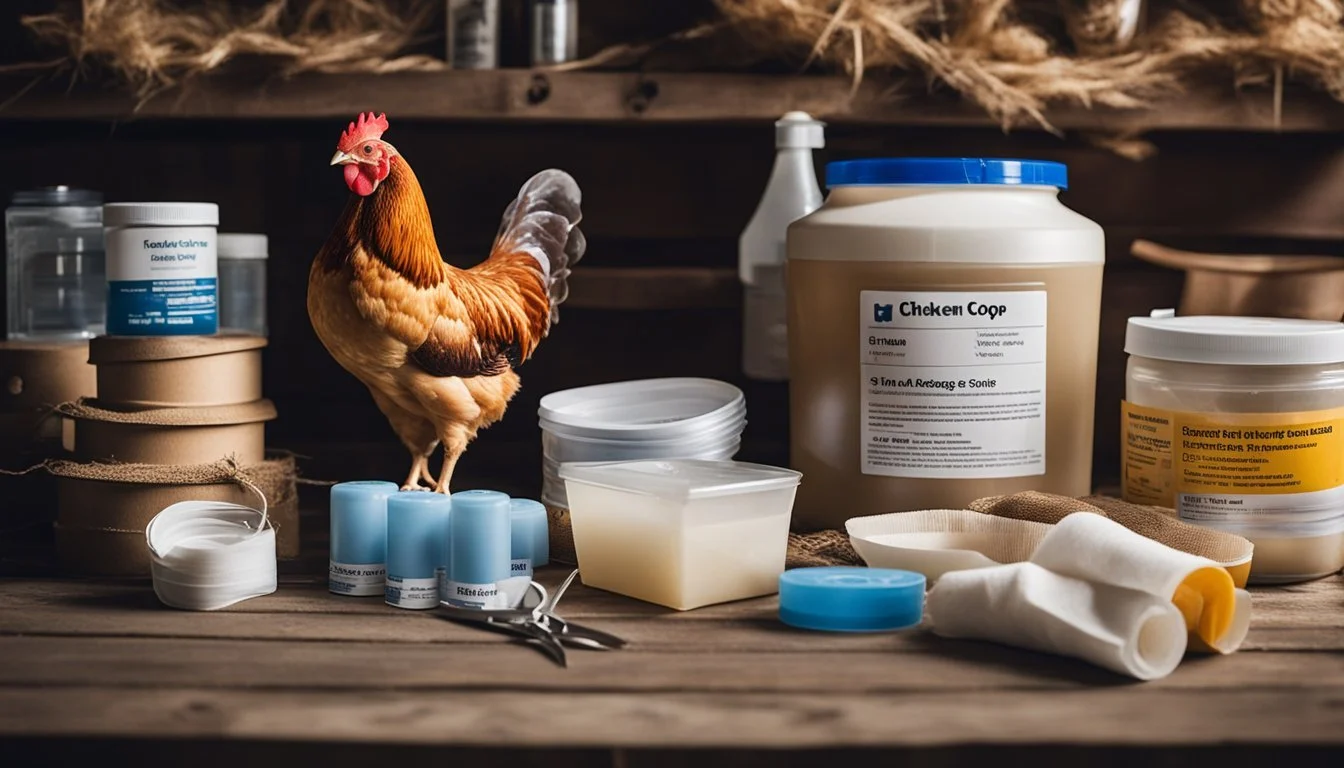7 Essential Chicken First Aid Supplies Every Coop Needs
Keeping backyard chickens healthy and safe is a priority for any poultry owner. Accidents, illnesses, and unexpected situations can arise at any moment, making it essential to be prepared with the right supplies.
What should you have on hand to address these emergencies effectively? This guide outlines the 7 essential items you need in a chicken first aid kit, ensuring you are equipped to handle common poultry health issues with ease and confidence.
1) Vetericyn Plus Poultry Care
Vetericyn Plus Poultry Care is a vital addition to any chicken first aid kit. This product aids in the healing of pecking sores, frostbite, bumblefoot, scratches, and vent prolapse. Its ingredients are non-toxic and antibiotic-free, making it safe for adult birds and hatchlings.
Ease of use is a key feature. The spray nozzle allows for targeted application, ensuring thorough cleaning of wounds under and between feathers. Being non-drying and non-irritating, it minimizes additional discomfort for injured poultry.
The absence of an egg withdrawal period sets Vetericyn Plus apart. It means there is no need to discard eggs during treatment. This aspect, coupled with its safety and effectiveness, makes it indispensable for poultry keepers.
2) Sav-A-Chick Probiotic Supplement
The Sav-A-Chick Probiotic Supplement is designed to support the gut health of chickens. Probiotics are beneficial bacteria that help maintain a healthy balance in the digestive system, which is crucial for overall health.
Given its importance, this supplement proves invaluable during times of stress or illness. By promoting a strong digestive system, it helps chickens absorb nutrients more effectively.
The Sav-A-Chick product typically comes in convenient packets. These packets can be mixed with water, making it easy to administer to poultry.
Adding this supplement to your chicken's water can help boost their immune system. It also reduces the chance of digestive disturbances.
Especially useful for young chicks, this probiotic supplement can aid in their development and growth. It provides the additional support they need during their early stages of life.
3) Poultry Wound Spray
Poultry wound spray is an essential item in any chicken first aid kit. It is designed to clean and protect injuries, preventing infections in your flock. The spray can be applied directly to wounds, making it easy to use.
When using poultry wound spray, ensure the affected area is clean. If the wound is actively bleeding, spray it onto a clean dressing or kitchen towel. Press gently to help stop the bleeding.
This type of spray is often antiseptic, reducing the risk of bacterial infections. Some products also promote quicker healing. Applying the spray two to three times a day can help ensure proper wound care.
Poultry wound sprays are versatile and can be used on various types of injuries, from peck wounds to predator attacks. Having it on hand can significantly improve the health outcomes for injured chickens.
4) Rooster Booster Pick No More
Rooster Booster Pick No More is a valuable addition to any poultry first aid kit. This chicken lotion helps control the common issue of chicken cannibalism. It contains ingredients specifically designed to repel aggressive birds and hide bare spots.
The lotion also aids in the healing process for various poultry wounds. Not only does it help deter picking, but it also promotes skin repair. This can be particularly useful for injuries such as pecking damage, bumblefoot, and vent prolapses.
Rooster Booster Pick No More comes in a convenient squeeze bottle, making it easy to apply directly to the affected area. Its user-friendly packaging ensures that poultry caretakers can quickly and efficiently address health issues.
Regular use of this product can maintain a more harmonious flock environment. By reducing aggressive behavior and facilitating faster healing, it contributes to the overall well-being of your birds.
5) Hen Healer Ointment
Hen Healer Ointment is an essential addition to any chicken first aid kit. It acts as a protective barrier for wounds, helping to keep dirt and contaminants out. This ointment is especially useful for treating minor cuts, scrapes, and abrasions on chickens.
Chickens are prone to pecking at each other's wounds, which can worsen injuries. Hen Healer Ointment's blue color deters other chickens from pecking at the treated area, promoting faster healing.
The ointment also contains antibacterial properties, reducing the risk of infection. It is designed to be safe for use on poultry and other birds, making it a versatile option in treating various avian injuries.
Application of Hen Healer is simple. Clean the wound thoroughly and apply a thin layer of the ointment. Make sure to monitor the healing process and reapply as necessary to ensure effective protection and healing.
6) Nutri-Drench Poultry
Nutri-Drench Poultry is a vital component of any chicken first aid kit. This liquid supplement targets the immediate nutritional needs of chickens that are weak, stressed, or not eating well.
Rich in vitamins and minerals, Nutri-Drench supports the immune system. It contains essential vitamins, electrolytes, trace minerals, and amino acids that help restore energy and strength.
Application is straightforward. For an individual chicken, administer 0.5cc directly into the beak twice daily. Alternatively, add 1cc per gallon of water to the flock’s drinking source, ensuring it's the only water provided.
This supplement is beneficial across all ages of poultry. Whether for chicks or fully grown chickens, Nutri-Drench can be a quick and efficient way to boost overall health and recovery during illness or stress.
7) Blue-Kote Antiseptic Spray
Blue-Kote Antiseptic Spray is a crucial addition to any chicken first aid kit. It acts as both an antifungal and antiseptic treatment, ideal for various injuries and wounds.
The bright blue color of Blue-Kote helps chicken owners identify treated areas quickly. This visibility ensures no wound goes unnoticed and untreated, promoting better care and recovery.
Blu-Kote can prevent infections from cuts, scrapes, and pecking injuries. Its antiseptic properties help keep bacteria at bay, reducing the risk of further complications.
By fostering a clean environment on the wound's surface, Blue-Kote assists in the natural healing process. Its antifungal properties also protect against fungal infections that can hinder recovery.
Not only does it treat wounds, but it also acts as an anti-pick solution. Chickens are naturally curious and might peck at injuries, making them worse. Blue-Kote's color and taste deter this behavior.
Every chicken owner should have Blue-Kote ready in their first aid kit. Its versatility and effectiveness make it indispensable for maintaining healthy, resilient birds.
Understanding Chicken Health Emergencies
Chicken health emergencies can arise from a variety of injuries or illnesses. Knowing how to recognize common issues and when to seek professional help is crucial for maintaining a healthy flock.
Recognizing Common Chicken Injuries
Chickens may experience cuts, scrapes, broken bones, and bumblefoot. Cuts and scrapes often result from sharp objects or pecking. Clean these wounds with an antiseptic and apply a self-adhering wrap or duct tape to keep dirt out.
Broken bones need immobilization using splints. Bumblefoot, an infection on the foot, shows as swelling and requires soaking the foot in an Epsom salt bath followed by cleaning and bandaging.
Identifying injuries quickly can prevent secondary infections or worsening of the condition.
When to Seek Veterinary Help
Understanding when a chicken needs veterinary attention can save its life. Seek help if a chicken displays severe bleeding that cannot be controlled, broken bones with protrusions, or symptoms like lethargy, persistent diarrhea, or difficulty breathing.
Unresponsive or critical conditions should always be evaluated by a vet. For diseases like Marek's disease or severe respiratory infections, professional diagnosis and treatment are essential.
Prompt veterinary care ensures that any underlying health issue is properly addressed.
Proper Usage of First Aid Supplies
Using first aid supplies properly is crucial to ensure the health and recovery of your chickens. It involves correct treatment techniques and maintaining a clean environment to prevent infections.
Administering Basic Treatment
Properly treating wounds and ailments begins with cleaning the affected area. Gently rinse the wound using saline solution or clean water. Pat dry with a sterile cloth.
Apply an antiseptic solution, ensuring it is safe for poultry. This step helps prevent infections and promotes healing.
Use syringes or droppers accurately for administering oral medications. Measure the required dose and deliver the medication slowly to avoid stress for the bird.
For bandaging, ensure the bandage is snug but not too tight to cut off circulation. Use self-adhering wraps for easy application, especially on wings or legs. If the wound is on a foot, covering the area with duct tape provides additional waterproofing and protection from dirt.
Maintaining a Clean Environment
A clean environment is essential to prevent infections. Regularly clean and disinfect the coop and surrounding areas using safe disinfectants.
Ensure chickens have access to clean water and fresh bedding. Change bedding frequently, especially when treating an injured bird, to keep the area sanitary.
When using Epsom salt baths, ensure the water level is appropriate and the water is lukewarm. This can relax the bird and aid in wound cleaning without causing additional stress.
Quarantine any injured or sick chickens to prevent the spread of disease. Use a separate, clean area to house the bird until it recovers fully.
Maintaining hygiene and proper first aid techniques are critical in managing chicken health effectively.

